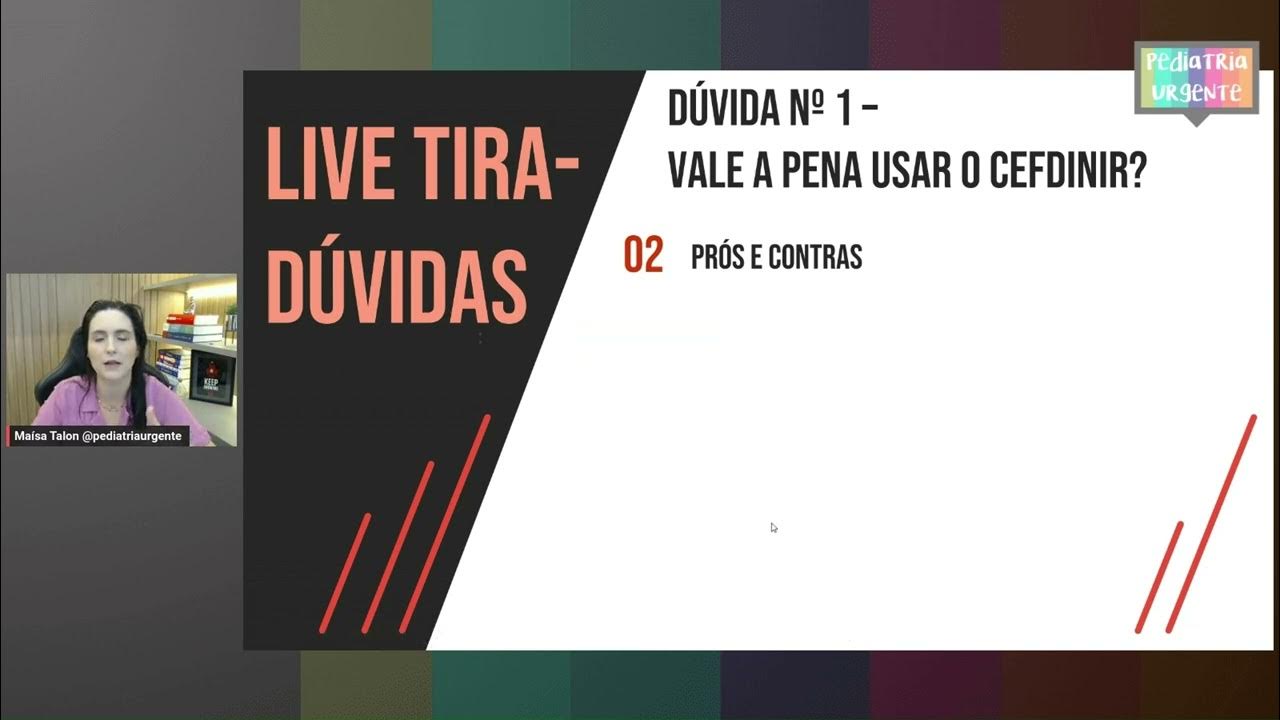Como identificar e tratar asma na pediatria - Dr Caique Acácio
Summary
TLDRThe transcript explains asthma's triggers, particularly respiratory infections like colds in children. It highlights common symptoms such as persistent coughing, especially at night, and wheezing. The doctor diagnoses asthma through physical examination, noting these signs. The treatment involves anti-inflammatory medication, prednisolone, and a bronchodilator, salbutamol, with specific dosages based on the child's weight. The use of a spacer with the inhaler ensures effective medication delivery. The doctor emphasizes the importance of recognizing the symptoms of asthma and treating it with appropriate medication, while also noting how respiratory infections contribute to various diseases.
Takeaways
- 😀 Asthma in children is often triggered by upper respiratory infections, such as those acquired in daycare or school.
- 😀 A key sign of asthma in children is persistent coughing, especially at night, which may worsen during a respiratory infection.
- 😀 Parents often report their child waking up at night with severe coughing, which may indicate asthma.
- 😀 Wheezing is a common symptom associated with asthma, which can be detected during physical examination.
- 😀 Diagnosing asthma requires ruling out other conditions like pneumonia, which can be challenging in rural areas without advanced diagnostic tools.
- 😀 If no pneumonia is found, asthma can be diagnosed based on symptoms like coughing and wheezing, particularly after a cold.
- 😀 Antibiotics are not used for treating asthma, as it is not an infectious condition.
- 😀 Treatment for asthma typically involves anti-inflammatory medications like prednisolone and bronchodilators like salbutamol.
- 😀 Prednisolone is typically dosed based on weight, with a common dosage being 3 mg per ml. For a 9 kg child, 3 ml is given once daily for 5 days.
- 😀 Salbutamol (Aerolin) is a bronchodilator given via a spacer, with one puff for every 2 kg of body weight. A 10 kg child would receive 5 puffs every 4 hours for 5 days.
- 😀 Understanding the role of respiratory infections in triggering asthma helps in managing not only asthma but other respiratory diseases as well.
Q & A
What is the main trigger for asthma in children, according to the script?
-The main trigger for asthma in children is upper respiratory infections, often contracted from daycare or school, which can lead to the development of asthma.
How does asthma manifest in children, based on the script?
-Asthma in children typically manifests as persistent coughing, especially at night. The child may also experience difficulty breathing, often accompanied by wheezing (sibilance) and sometimes crackling sounds (crepitation) when examined.
What symptoms might a parent describe when their child has asthma?
-Parents might describe their child waking up at night with a persistent cough that doesn't stop, leading them to suspect asthma.
What should a healthcare provider look for when diagnosing asthma in children?
-A healthcare provider should look for signs like wheezing, coughing, and difficulty breathing. The child may also show signs of lower respiratory issues. If in a resource-limited setting, the provider may initially treat it as pneumonia, but diagnostic tools like blood tests or X-rays can confirm asthma.
What is the difference between treating asthma and pneumonia in children?
-Asthma is treated with anti-inflammatory medications like corticosteroids and bronchodilators, whereas pneumonia is treated with antibiotics. Asthma does not require antibiotics.
What medications are used in the treatment of asthma in children, and how do they work?
-Asthma in children is treated with prednisolone (a corticosteroid) to reduce inflammation and salbutamol (a bronchodilator) to open the airways. Prednisolone helps reduce the inflammation in the lungs, while salbutamol helps relieve the bronchospasm by dilating the airways.
How should prednisolone be administered to children for asthma treatment?
-Prednisolone should be given once a day for 5 days. The dosage is based on the child's weight. For example, a child weighing 9 kg would receive 3 ml once a day for 5 days.
How is salbutamol administered to children, and what is the dosing guideline?
-Salbutamol is administered through an inhaler with a spacer. The dosage is calculated based on the child's weight, with 1 puff for every 2 kg of body weight. For example, a 10 kg child would receive 5 puffs every 4 hours for 5 days.
Why is a spacer used when administering salbutamol to children?
-A spacer is used to ensure that the medication reaches the child's lungs effectively. It helps to deliver the proper amount of medication and reduce the likelihood of side effects.
What is the importance of understanding respiratory infections in managing asthma in children?
-Understanding respiratory infections is crucial in managing asthma because these infections often trigger asthma attacks. By recognizing the connection, healthcare providers can better diagnose and treat asthma in children, especially when there are limited diagnostic resources.
Outlines

This section is available to paid users only. Please upgrade to access this part.
Upgrade NowMindmap

This section is available to paid users only. Please upgrade to access this part.
Upgrade NowKeywords

This section is available to paid users only. Please upgrade to access this part.
Upgrade NowHighlights

This section is available to paid users only. Please upgrade to access this part.
Upgrade NowTranscripts

This section is available to paid users only. Please upgrade to access this part.
Upgrade NowBrowse More Related Video

Prós e contras do CEFDINIR ("a ceftriaxona oral")

Child health nursing MCQs II Important nursing questions P-3 II 🎯JEPBN 🎯RRB 🎯NORCET II

Guillain Barre Syndrome (GBS) Treatment, Pathophysiology, Symptoms, Neurology Medicine Lecture USMLE

SISTEM PERNAPASAN MANUSIA PART 3 (GANGGUAN PADA SISTEM PERNAPASAN)

Children Exposed to Secondhand Smoke - American Medical Association (AMA)

Household air pollution Commission
5.0 / 5 (0 votes)